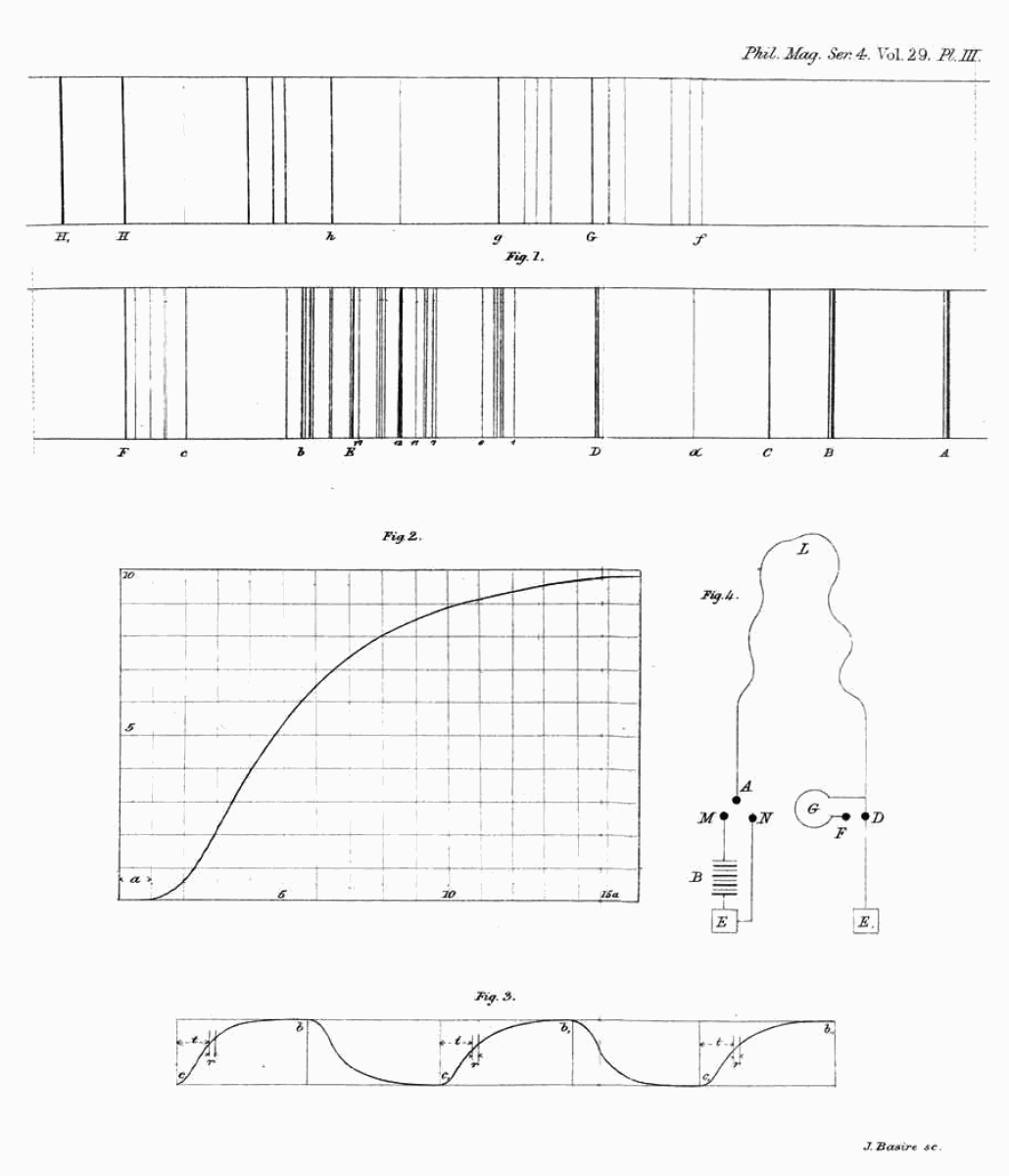
somewhat more than one-third of that of the earth. Between this result, and what we already know of the motion of the solar system through astronomy, there is no great divergence.
I hope during the present year, however, to be able to continue my spectrum-experiments, and to have a better opportunity of determining, numerically, the magnitude of the motion of the solar system. In the present paper my object has merely been to show the possibility of solving, optically, this interesting problem in physical astronomy.
LXVIII. On the Intersections of a Pencil of four Lines by a Pencil of two Lines. By Professor Cayley, F.K.S.*
pLUCKElt has considered (“ Analytisch-geometrische Apho--*■ ristnen,” Crelle, vol. xi. (1834) pp. 26-32) the theory of the eight points which are the intersections of a pencil of four lines by any two lines, or say the intersections of a pencil oifour lines by a pencil of two lines: viz., the eight points may be connected two together by twelve new lines; the twelve lines meet two together in forty-two new points; and of these, six lie on a line through the centre of the two-line pencil, twelve lie four together on three lines through the centre of the four-line pencil, and twenty-four lie two together on twelve lines, also through the centre of the four-line pencil.
The first and third of these theorems, viz. (1) that the six points lie on a line through the centre of the two-line pencil, and (3) that the twenty-four points lie two together on twelve lines through the centre of the four-line pencil, belong to the more simple theory of the intersections of a pencil of three lines by a pencil of two lines; the second theorem, viz. (2) the twelve points lie four together on three lines through the centre of the four-line pencil, is the only one which properly belongs to the theory of the intersections of a pencil of four lines by a pencil of two lines. The theorem in question (proved analytically by Pliicker) may be proved geometrically by means of two fundamental theorems of the geometry of position : these are the theorem of two triangles in perspective, and Pascal’s theorem for a line-pair. I proceed to show how this is.
Consider a pencil of two lines meeting a pencil of four lines in the eight points [a, b, c, d), {a!, b', c', d'); so that the two lines are abed, a’Vdd1 meeting suppose in Q; and the four lines are aa!, bb1, cd, dd! meeting suppose in P; then the twelve points are
* Communicated by the Author.